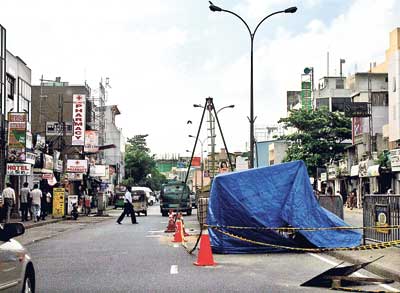
New study helps track economic strengths/weaknesses in districts
The Economic Governance Index (EGI) study in Sri Lanka has assisted in identifying and facilitating an understanding of government-influenced constraints to private sector development and economic growth. The recently concluded Sri Lankan study, conducted by The Asia Foundation in conjunction with the Nielsen Company, had its findings presented this week to an audience of individuals from businesses and local government around the country. The study follows the success of similar studies carried out by The Asia Foundation in Indonesia, Philippines, Cambodia and Vietnam. For the first time in Sri Lanka, the EGI facilitated the measurement of the enabling environment for private enterprise. Focusing at the local level, it covers all 48 municipal and urban council localities of seven provinces with the exception of the Northern and Eastern provinces due to 'logistical constraints.' The Asia Foundation noted the absence of peace and order made it impossible to conduct research in these areas. Central Bank Governor, Nivard Cabraal also spoke at the event and stressed the importance in accepting the findings of the study. "If something can't be measured, then it can't be improved," he said. Cabraal added that the central mission of the Central Bank was to work towards the prosperity of the nation, particularly towards a 'balanced regional development.' The Western Province has increased its share of GDP contribution which is close to 51% but said this was to be expected given that the harbour, the tourism sector and industries were located in the Western Province. Cabraal also pointed out that per capita income for 2006 was US$1,410 but was over US$2000 for the Western Province. The per capita income for the other provinces is somewhere between US$730 to US$790. He said unless the business environment was conducive, growth was not possible. "Profit is not a bad thing," Cabraal added."It is important for generating business." Sri Lanka's business sectors are growing and expected growth this year was at 6.7%. Cabraal also spoke of the CB's Statistics Department's plan to track prosperity through a prosperity index. The comparative analysis of local economic governance was based on 10 sub-indices. Second sub-index
Third sub-index The fifth sub-index Sixth sub-index Seventh sub-index Ninth sub-index Tenth sub Index
|
|
||
| || Front
Page | News
| Editorial
| Columns
| Sports
| Plus
| Financial
Times | International
| Mirror
| TV
Times | Funday Times || |
| |
Reproduction of articles permitted when used without any alterations to contents and the source. |
© Copyright
2007 | Wijeya
Newspapers Ltd.Colombo. Sri Lanka. All Rights Reserved. |
